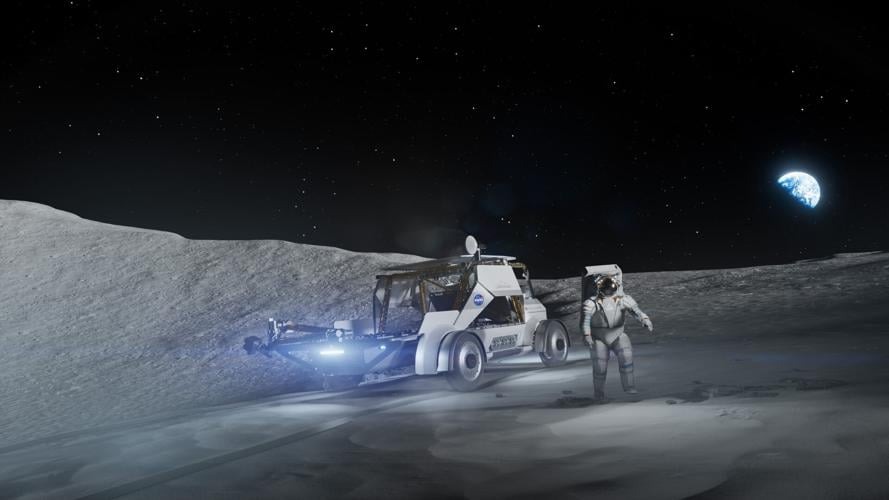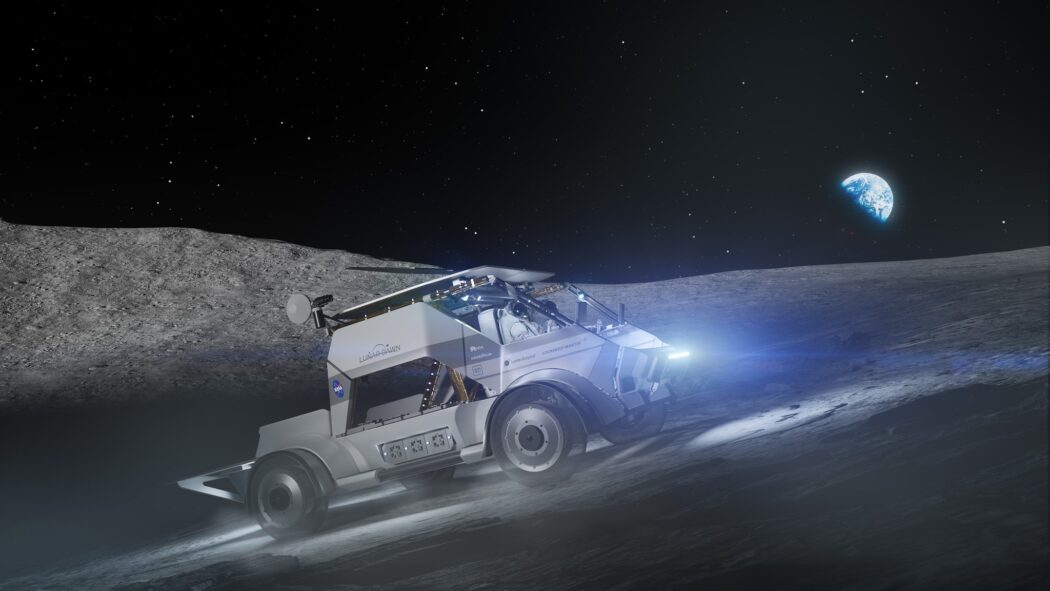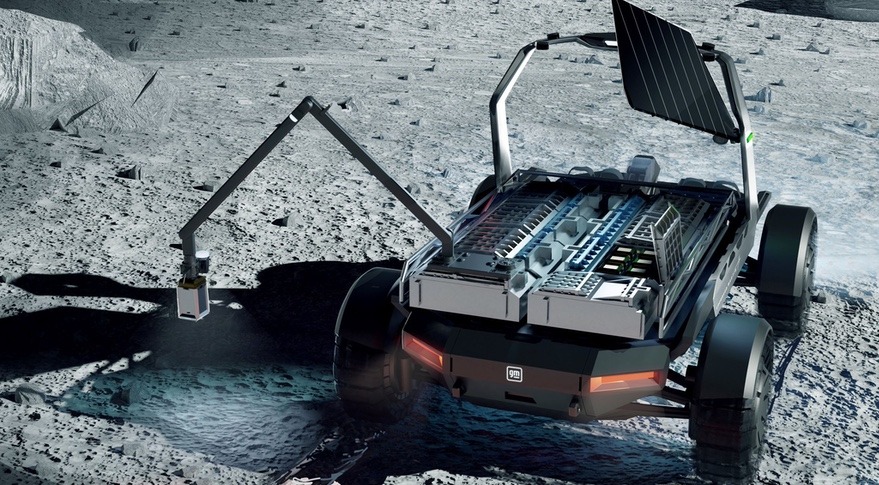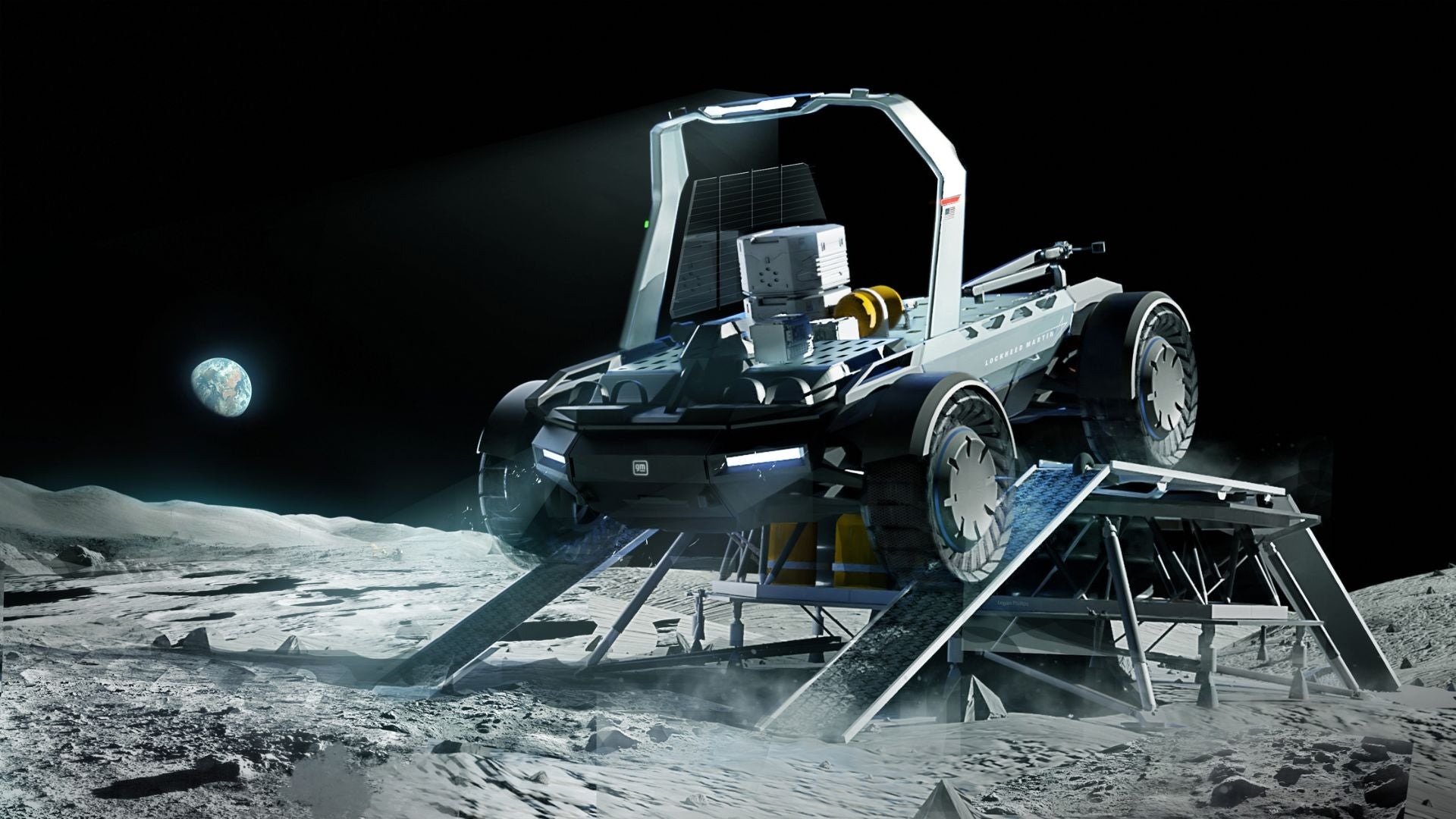GM’s battery packs might find their way to the lunar surface as part of NASA’s Lunar Terrain Vehicle (LTV) project.
Last week, NASA awarded contracts for the LTV to three companies, with Lunar Outpost being one of them. Lunar Outpost intends to incorporate General Motors’ electric vehicle (EV) battery technology into its lunar vehicle.

Under a contract worth up to $4.6 billion, NASA is assisting external entities in developing the next generation of lunar rovers for use by astronauts in the Artemis campaign. The funds will be divided among Intuitive Machines, Venturi Astrolab, and Lunar Outpost. Lunar Outpost, leading the Lunar Dawn team, includes Lockheed Martin, Goodyear, MDA Space, and General Motors.
While Lunar Dawn has revealed a rendering of its LTV, substantial work lies ahead. The team aims to construct a vehicle enabling Artemis astronauts to navigate the lunar surface safely for conducting experiments and preparing for future human missions to Mars. The LTV will feature a flexible cargo bed, a robot arm, resilience to extreme temperatures, and autonomous navigation capabilities for operation with or without crew.

Lunar Outpost will undertake the primary design and development responsibilities as the project’s lead contractor, with each team member contributing significantly. Lockheed Martin will leverage its expertise to facilitate vehicle production, while General Motors will provide the power source, contributing to chassis and suspension design. Goodyear, having collaborated with NASA since the Apollo missions, will develop specialized tires, and MDA Space will handle the robotic arm and interface.
Kirk Shireman, Lockheed Martin’s vice president of Lunar Exploration Campaigns, emphasized the significance of these technologies in enabling sustainable human presence in space, away from Earth.
The three teams will spend the next year refining their concepts before presenting them to NASA. While the timeline beyond this stage remains uncertain, NASA aims to have the LTV ready before the Artemis 5 mission in 2030.




